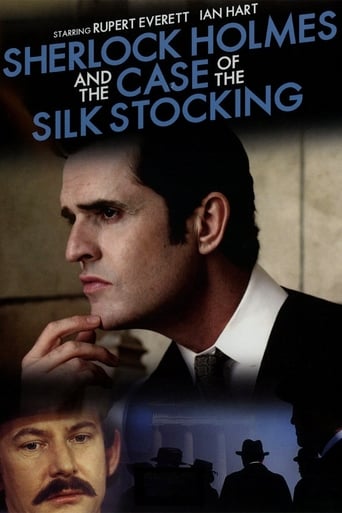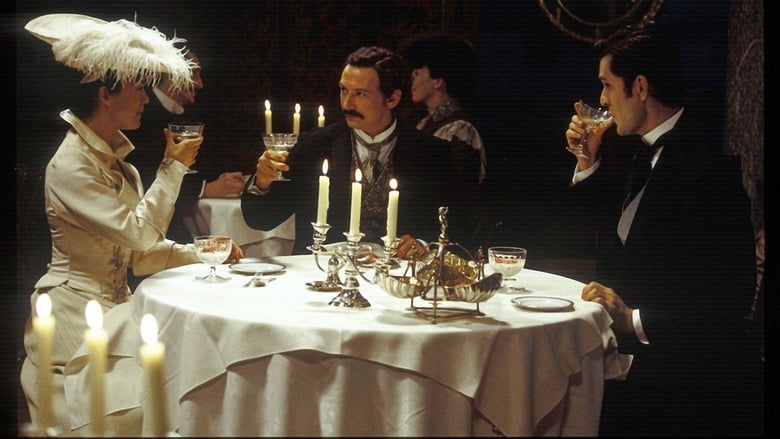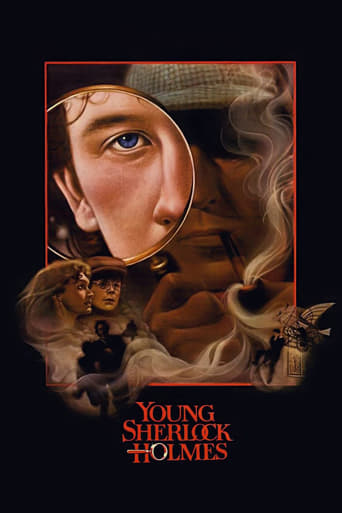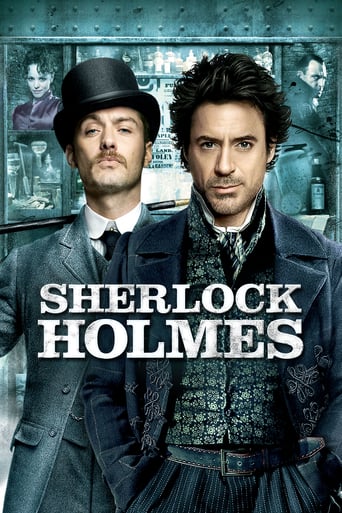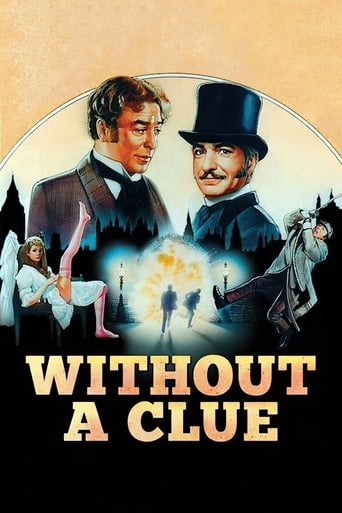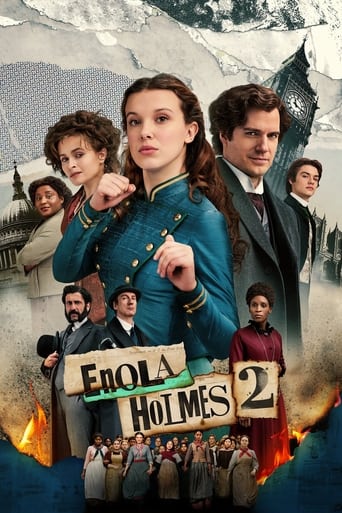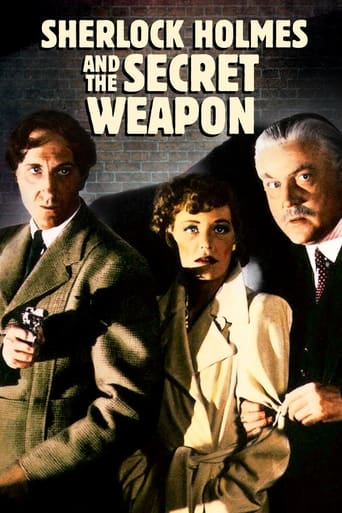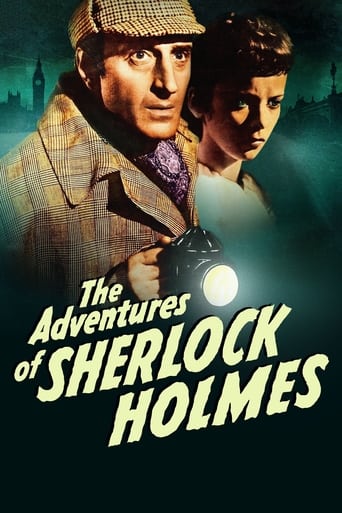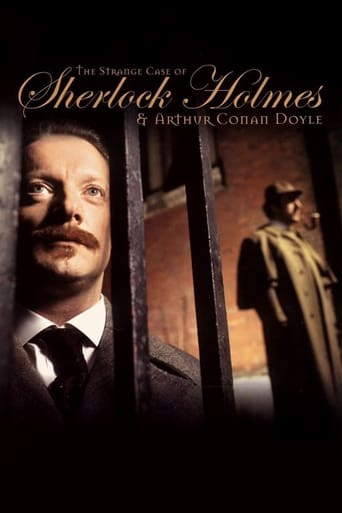Sherlock Holmes and the Case of the Silk Stocking (2004)
The corpse of a shabbily dressed young woman has been discovered in the mud flats of the Thames at low tide. Police assume she's a prostitute, but Dr. Watson suspects something more and goes to his old friend Holmes, now retired and at very loose ends.
Watch Trailer
Cast
Similar titles
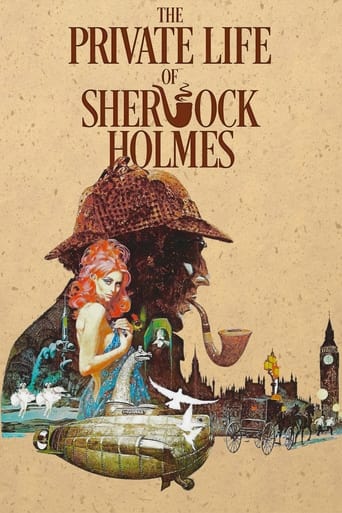
Reviews
Very Cool!!!
This is a coming of age storyline that you've seen in one form or another for decades. It takes a truly unique voice to make yet another one worth watching.
The thing I enjoyed most about the film is the fact that it doesn't shy away from being a super-sized-cliche;
One of the most extraordinary films you will see this year. Take that as you want.
An original BBC story with Conan Doyle's two main characters Sherlock Holmes (Rupert Everett) and Dr. Watson (Ian Hart), "The Case Of The Silk Stocking" takes place in London in the early 1900s. A young girl of the English aristocracy has been murdered. Some of the story characters are aristocratic and not very likable. Major scenes take place in a high brow, Victorian setting.The plot is clear enough and there's some genuine suspense. But there are too few suspects. I kept waiting for some strange plot twist; it never came. The story's underlying premise I found disappointing. And the solution to the case is revealed too soon.Although Holmes presents many of the traits and mannerisms we would expect from Conan Doyle's original character, in this film, as portrayed by Rupert Everett, the character comes across less intellectual as merely haughty and hostile, not unlike the aristocratic characters into whose world he has entered. Except for the charming young females, the entire bundle of characters is too snooty and superior for my preference.Probably the best element is the editing, which skillfully blends concurrent events in an interesting way and shows character relationships across the entirety of the principal cast. Intermittent background music is nondescript and a bit loud. Costumes and prod design are expertly crafted for a difficult social class and historical era. Color cinematography is indifferent but competent. They went a bit overboard with the fog machine.Well worth a one-time viewing, "The Case Of The Silk Stocking" strikes me as your typically well-directed but assembly-line-produced murder mystery. The result is a modern update of an iconic fictional detective investigating an original, but none too believable, story; by-the-numbers script; and a well-known but miscast actor in the title role.
Just think of all the great Sherlock Holmes stories that Doyle wrote. 56 short stories, four novels, and all of them at least above average to good. So why on earth did the BBC see fit to write a new story, complete with gaping plot holes, for their 2004 Christmas TV film? Instead of having the eponymous detective hunting down some classic villain in one of Doyle's Victorian landscapes, we get a modern-mannered Holmes investigating a sexual pervert with an interest in paedophilia, a plot with psycho-thriller origins far more suited to a modern-day thriller like MESSIAH than a classic murder mystery. It really makes me cross, especially when the origins of the character are undermined and new characters introduced willy-nilly.Everett is hopeless in the leading role, too openly camp to be convincing, and his portrayal is totally unlikeable. Bring back Richard Roxburgh, that's what I say. Complete with false eyelashes, lip-stick, and a heavy line in chain-smoking, Everett mumbles all of his lines. Saying that, the character is false too, actually going down the wrong track for quite a time and getting flummoxed very often; certainly a far cry from the Holmes of the stories. Shots of the detective creeping into the bedrooms of teenage girls are simply ludicrous and betray a huge ignorance of the period as a whole. Yes, Holmes liked to disguise himself, but did they really have lifelike latex masks at the turn of the last century? The rest of the cast really fall into the background; there are no stand-out turns here, but a whole lotta bad acting instead. The best of the bunch is Ian Hart, returning as Watson from 2002's HOUND OF THE BASKERVILLES. At least he tries in this one, which is more than can be said for everyone else present. So, there you have it: a Sherlock Holmes film which betrays all of the characters; which turns the story into a shabby drawn-out shambles and which introduces a female psychoanalyst to top things off. How dumb can you get?
This film has gotten some negative reviews but I'm not certain why. This is a later, Edwardian Holmes. The period detail seems precise enough. The telephone came into common use after it was installed in Buckingham Palace by Queen Victoria, which acted as a kind of placing on of hands. Men smoked cigarettes as well as pipes and cigars, although women didn't, unless they were strong-minded aristocrats or adventurous Americans. Fingerprinting was routine.Of course Rupert Everett is neither Basil Rathbone or Jeremy Brett, but at least he's tall. The character as written more or less fits Conan-Doyle's image except at the beginning, when Holmes insults Watson and tries to get rid of him. A bit too abrasive there. And Everett's default expression seems to be a sneer.Nevertheless, all the most enjoyable aspects of the Holmes tales are present in this pastiche. True, the opening scene is a little gloomy. An opium den in London. A Chinese man is seen lighting the rolls of dope in the bowl of a pipe and the camera pans slowly up to a face we must correctly assume is Holmes'. The next scene is a shot of the Mudlarks out of Dickens, sloshing around in the black mud of the Thames, clouded by industrial smoke, and finding a woman's dead body amid the muck.Thereafter the pattern becomes more familiar. Holmes shoots up once, but it's immediately after he reaches a dead end, is waiting for evidence to appear, and advises Watson that we must "possess our souls in patience." I liked it. The budget must have been sizable. The appointments are high end and the wardrobe is lavish. But the story, while simple enough in outline, involved some complicated goings on among the aristos and there were times when I couldn't attach the names to the correct figures. I had no trouble with Rachel Hurd-Wood as the thirteen-year-old kidnapee though. (Wow.) Helen McRory as the aristocrat-in-chief gives a masterful performance a s a cold, self-contained, half-mad bitch. And Michael Fassbender is outstanding as the icy footman.Yes, it's a serial killer movie but it doesn't seem like one. Conan-Doyle could have written most of this. And the detective could have been no one but Holmes -- not Philo Vance or Nero Wolfe or Charlie Chan.
Rupert Everett's Holmes makes me miss Jeremy Brett all the more. Everett looks much too healthy for Sherlock Holmes, particularly one who, at the opening of this version, has "retired" into a life of opium use.Well, we can't have Jeremy Brett, but is a good story too much to ask for? The entire story keys on fingerprint identification, a crime-solving technology unknown in Doyle's stories. Since Holmes' career roughly coincided with the first uses of fingerprints to solve crimes and *Scotland Yard's* establishment of the first fingerprint bureau, it seems to me the writers could have made a great Holmes story out of this "new" crime-solving technology, if they had cared. Perhaps Holmes might have reacted with suspicion to this new technique that HE did not pioneer (especially if introduced by the despised Lestrade!), convinced himself that it had merit, reacted with frustration when the fingerprints of the killer did not match the chief suspect, then (in a typical Holmesian flash of insight) realized the truth Just In Time to save the killer's intended next victim. It was a twist Doyle himself used more than once (e.g., in A Study In Scarlet and The Man With The Twisted Lip) but that could have made it seem all the more authentic.PBS showed this on Masterpiece Theatre, but it's no Masterpiece. It's watchable, certainly, but it could have been much more.
